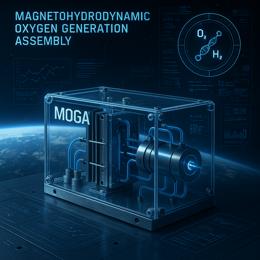Image created by AI
Carbon Nanotubes: Pioneering the Future of Space Telescopes and Earth Applications
In the vigorous pursuit of finding life beyond our solar system, NASA's state-of-the-art carbon nanotube technology is poised to play a pivotal role. Developed by a dedicated team at NASA’s Goddard Space Flight Center and led by acclaimed innovators John Hagopian and Stephanie Getty, this technology is integral to the functionality of the forthcoming Habitable Worlds Observatory (HWO)—a specialized space telescope dedicated to detecting the faintest glimmers of potentially habitable exoplanets.
The underlying principle of carbon nanotubes' effectiveness is in their highly absorptive quality—multiwalled structures that trap incoming light, transforming it into heat, rather than reflecting it. This characteristic significantly reduces stray light interference, which is a critical advantage when observing distant celestial bodies, which are typically obscured by the overwhelming brightness of their host stars.
Advanced Nanophotonics, LLC, Hagopian's venture, has been instrumental in overcoming significant technological challenges to produce these nanotubes tailored for space application, especially with backing from the Small Business Innovation Research (SBIR) funding. Their approach involves intricate patterning of catalysts, enduring high-temperature processes to grow these nanotubes, and devising mirrors that retain their shape and reflective properties under intense conditions—creating a foundation for potential game-changing advancements in astrophysical instruments.
The intricate coronagraph setup is built upon several key components, including the apodizer mirror, which is at the heart of tackling diffractions and stray light. The resulting observational precision, enabled mainly by the carbon nanotube coating, augments the telescope's capability to detect the chemical composition of exoplanet atmospheres—a significant step in identifying potentially life-supporting conditions.
Beyond the cosmos, the practical applications of carbon nanotube innovations have found a foothold on Earth. The technology was successfully integrated into NASA's recent Ocean Color Instrument onboard the PACE mission, enhancing our understanding of atmospheric and oceanic health. Additionally, this versatile innovation extends to medical screening technologies, with developmental strides toward a carbon nanotube-based breathalyzer intended for rapid COVID-19 detection.
As the HWO mission approaches, existing test beds across the United States are active with rigorous evaluations of these apodizer mirrors and components, involving key researchers and institutions determined to optimize performance for extraterrestrial observation. With the Gemini Planet Imager already set to integrate Advanced Nanophotonics' designs next year, the near future could see significant leaps in exoplanet discoveries.
Moreover, ambitious test beds for carbon nanotube components are continually being established with comprehensive Phase II SBIR contracts in partnership with teams from the University of Arizona to the University of California Santa Clara. The potential that carbon nanotube technology offers to our space endeavors and addressing terrestrial challenges powerfully reflects its multidisciplinary impact and promises further groundbreaking applications in different scientific domains.










